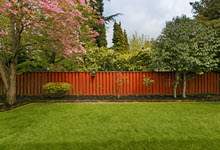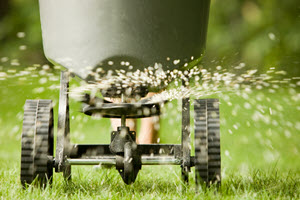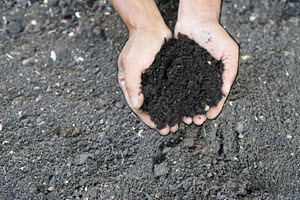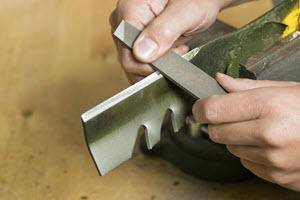Wake Up Your Lawn After Winter

By Leon Organ
Sport Field Maintenance Supervisor, City of St. John’s
After a long winter’s sleep, your lawn needs some attention to get an early start on the growing season.
Once the grass on your lawn starts showing, follow these basic steps to have your lawn looking great and healthy in no time - all without the use of chemicals.
 |
Dethatch Grab a rake and start dethatching your lawn as the fall grass has withered and died and needs to be removed. If not removed it may contribute to an excessive layer of thatch. While some thatch is good for your lawn as it will help with moisture control, too much can stunt grass growth. Snow that lingers on your lawn can also cause patches of dead grass to mat together and lead to snow mold - a type of fungus and turf disease that damages or kills grass after the snow melts. Snow mold can stop new grass shoots from breaking through the dead grass mats. While raking, take the time to inspect for damage from insects and weeds. |
 |
Aerate & Overseed Aerating your lawn is important especially if it has a lot of traffic. Moss growth thrives on compacted soil and aeration helps loosen the soil so that water, air and nutrients get into the turf. Aeration involves perforating or piercing the soil with small holes or by removing small plugs of thatch and soil from the lawn. Tools for aerating soil are often available for rent or purchase, check local home improvement businesses or rental agencies. While aerating your soil it is also a good time to do an early overseeding of your lawn. Grass seed will go into the holes left behind by the aerator and get an early start sprouting. A good blend of seed to use is a mixture of Perennial Rye and Kentucky Bluegrass:
|
 |
Soil Test Have a soil test done on your lawn. The results from a soil test are very important in determining what your lawn will need throughout the year. Not only will you know what your lawn is lacking in essential nutrients like nitrogen, phosphorus and potassium, it will also let you know how acidic your lawn is. From this, you can select a fertilizer that suits your needs and help you determine how much lime to add. Home gardener soil tests are conducted by the Soil, Plant & Feed Laboratory of the Department of Fisheries, Foresty and Agriculture. Go to gov.nl.ca/ffa for more information or call 729-6738. |
 |
Mow Take care of your main garden tool, the lawn mower. Make sure it is tuned up and ready to go before the weather warms and grass starts growing. Sharpen the blades as a dull blade will tear and pull the grass rather than cut it. Lawn growth will be impeded if the grass shoots are damaged and can result in the appearance of brownish tips. A good rule of thumb is to mow your lawn at a height of approximately 5 cms (2”). This is the optimum height for most grass species; avoid removing more than one third of the blade of grass at any one time. If the lawn is overdue for a cut, a couple of successively shorter mowings spaced days apart is better than mowing a large amount all at once. And while you’re at it – mulch those clippings instead of bagging or raking – it’s free fertilizer! |
